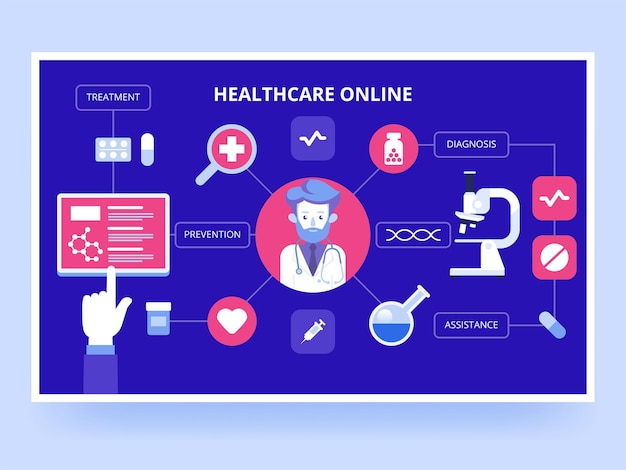How Subscription Based Healthcare is Reinventing Patient Access to Services
How Subscription Based Healthcare is Reinventing Patient Access to Services
Blog Article
The Increase of Subscription-Based Healthcare and Its Influence On Patient Care
As health care evolves, the subscription-based model is gaining grip, guaranteeing to revolutionize individual care by offering predictability and accessibility. These models, which bypass traditional insurance, can redefine the patient-doctor dynamic, stressing tailored and precautionary treatment. Yet, similar to any type of advancement, they offer challenges, especially worrying equitable access for all socioeconomic teams. The possibility for these versions to reshape healthcare distribution raises pushing inquiries regarding their long-lasting sustainability and inclusivity. Are these subscription solutions the future of health care, or do they take the chance of leaving prone populations behind? The complexities of this change warrant a closer evaluation.
Recognizing Subscription Medical Care Designs
Understanding the principle of subscription medical care versions entails analyzing a transformative approach to clinical services that stresses affordability and access. These versions, frequently referred to as straight key treatment (DPC) or attendant medicine, have become cutting-edge options to typical fee-for-service medical care systems. Subscription health care allows patients to pay a set monthly or annual cost for a specified collection of medical solutions, which may consist of limitless workplace check outs, regular exams, and fundamental laboratory examinations, without the need for conventional insurance policy payment.
The framework of membership healthcare designs is created to streamline patient treatment by removing third-party payers and intricate invoicing codes, therefore lowering administrative problems. Healthcare providers can concentrate much more on patient care, promoting stronger patient-provider connections. This design likewise advertises preventative treatment by motivating routine gos to, as the financial barrier of per-visit costs is eliminated.
The membership version typically equips medical care providers to take care of smaller person panels, enabling more personalized care. It straightens financial motivations with individual health outcomes, as companies are inspired to maintain patient satisfaction and wellness. On the whole, recognizing subscription health care designs calls for identifying their prospective to reshape how care is provided and accessed.
Advantages for Suppliers and people

With a constant profits stream, healthcare experts can devote more time to each client, leading to an extra extensive and personalized care experience. The focus on precautionary care within subscription strategies can lead to better patient outcomes and minimized lasting medical care expenses.
Obstacles and Worries
While subscription-based health care models present various benefits, they likewise come with a collection of difficulties and concerns that should be addressed. This elevates ethical inquiries concerning equitable access to healthcare services.
Financial sustainability of subscription-based designs is an additional problem. Providers must stabilize the fixed income from memberships with the variable costs of healthcare solutions, which might change as a result of unforeseen medical needs. This can produce pressure to limit services or rise fees, potentially influencing client satisfaction and care high quality.
In addition, regulatory oversight of subscription-based healthcare designs is still developing. Resolving these difficulties is essential for the effective and equitable implementation of subscription-based health care.
Effect On Patient-Doctor Relationships
One considerable effect of subscription-based health care designs on patient-doctor connections is the possibility for enhanced connection and individualized care. By embracing a subscription design, physicians can take care of a smaller sized patient panel, allowing for even more committed time with each person. This raised schedule promotes a deeper understanding of a client's case history, way of life, and preferences, making it possible for much more customized therapy plans and treatments.

Nevertheless, it is important to acknowledge that while subscription-based models may benefit those that can afford them, they might unintentionally expand medical care disparities. Patients who are not able to take part in these designs could experience reduced access to customized treatment, possibly influencing their partnerships with medical care providers. Therefore, while the membership version supplies promising advantages for patient-doctor partnerships, it also postures challenges that need to be addressed to guarantee equitable health care access.
Future of Health Care Accessibility

The role of modern technology can not be overlooked in this transformation. Telemedicine platforms and digital wellness documents facilitate seamless communication in between people and healthcare carriers, damaging down logistical and geographical obstacles. Additionally, improvements in artificial knowledge and data analytics can additionally customize treatment by anticipating client needs and optimizing therapy strategies.
However, the future of healthcare access likewise presents difficulties, such as guaranteeing equity throughout various socio-economic groups. Policymakers and doctor have to collaborate to connect the digital divide, ensuring that subscription-based versions stay inclusive and affordable. As these systems grow, they hold the pledge of making medical care a lot more accessible, efficient, and patient-centric.
Conclusion
Subscription-based medical care designs are improving person care by giving a steady expense framework and improving access. The increase of subscription-based medical care urges positive client involvement, which has the possible to enhance individual results and contentment, signifying why not find out more a transformative change in medical care shipment.
As health care progresses, the subscription-based model is acquiring traction, assuring to revolutionize individual care by supplying predictability and access.Subscription-based medical care designs use unique advantages for both people and providers, improving the overall healthcare experience.As health care systems progress, the future of health care gain access to frequently pivots on the combination of ingenious designs and technologies.Subscription-based health care versions are improving individual care by offering a steady expense framework and improving ease of access. The rise of subscription-based medical care motivates aggressive patient interaction, which has the prospective to boost client outcomes and satisfaction, signaling a transformative shift in medical care shipment.
Report this page